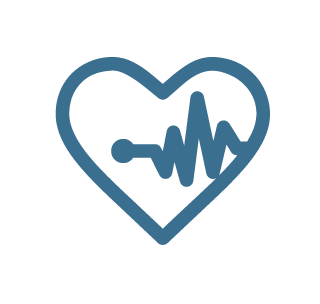Employee Health Benefits
NOTE: The following is a general description of some common benefit options. It is not intended to be legal or tax advice. Consult your CFO or tax specialist.
HEALTH INSURANCE
What it is
Health insurance is a core benefit that contributes to the financial stability and well-being of employees and their families.
bENEFITS OF IMPLEMENTING THIS
The ability to offer health insurance helps attract and retain top talent. It helps keep employees healthier, happier and more productive. Preventive care reduces absenteeism and lost productivity. Family-friendly employers make every effort to provide health benefits.
Tips and Tools
Even for employers who already provide health insurance, it’s worth looking at adjustments that may provide lower premiums, lower co-pays, or smaller deductibles, based on employee needs. Employees may be struggling to pay family premiums, be putting off appointments to avoid co-pays or be unable to afford care due to large deductibles. If so, there may be different options that are more suitable to employees at your organization.
Small Businesses
Texas insurance law defines a small employer as a business with two to 50 employees, regardless of how many hours they work. Small employers can choose whether to offer health insurance to their employees. If they offer health insurance, it must be available to all employees working 30 hours or more per week and their dependents. Most insurance companies require at least 75 percent of a small employer’s full-time employees to participate in the health plan. Businesses with 25 or fewer full-time equivalent employees that pay at least 50 percent of premiums and pay average annual wages less than $50,000 may be eligible for a tax credit. To get the tax credit, the business must buy coverage through the federal Small Business Health Options Program. For more information, visit HealthCare.gov’s program overview page. More information about small employer health insurance in Texas is available here: Texas Department of Insurance
DENTAL AND VISION INSURANCE
What it is
While some health insurance plans, these are often excluded from traditional health insurance. There are separate, standalone plans for vision or dental benefits that can be used on top of a health insurance plan as a form of supplemental insurance. There are even dental and vision insurance “packages” that offer benefits for both.
bENEFITS OF IMPLEMENTING this
As with other health insurance, dental and vision insurance allow employees to receive preventative care for themselves and their families. Preventative care reduces absenteeism. Insurance also lessens the potential risk of a major expense that jeopardizes family economic stability.
Tips and Tools
The two most popular voluntary benefit programs for employees are vision and dental insurance.
SECTION 125 “CAFETERIA PLANS”
What it is
Cafeteria Plans — also called reimbursement accounts, flexible benefit plans, or Flexible Spending Accounts (FSAs) — are authorized by Internal Revenue Code Section 125 and provide a tax-advantaged way to pay certain out-of-pocket health care expenses and work-related dependent care expenses.
BENEFITS OF IMPLEMENTING THIS
A cafeteria plan can include the following benefits:
Accident and health benefits
Adoption assistance
Dependent care (including child care) assistance
Group-term life insurance coverage
Health Savings Accounts
Tips and Tools
For descriptions of a range of taxable and non-taxable benefits, see IRS Publication 15-B, Employers Tax Guide to Fringe Benefits (www.irs.gov/forms-pubs/about-publication-15b) and consult your CFO or tax specialist.
SHORT-TERM DISABILITY
What it is
Short-term disability insurance provides financial help to individuals who are temporarily unable to work because of illness, injury or pregnancy. “Short-term” means a person’s absence from work cannot be permanent and is usually limited to two years.
BENEFITS OF IMPLEMENTING THIS
Disability claims related to pregnancy and childbirth are steadily increasing and account for approximately 15% of new disability claims for female wage earners. This benefit is important to the financial health of families and allows employees to access these products regardless of whether the employer or the employee pays for it.
Tips and Tools
Typical plans are inexpensive to institute
If you can offer it as a paid plan, you can offer it on a voluntary or employee-paid basis
Short-term disability plans are increasingly being used for expectant mothers; ensure that the plan begins before conception
Depending on the outcome of birth, the coverage the plan offers can vary, so take note of that
EMPLOYEE ASSISTANCE PROGRAMS (EAPS)
What it is
Employee Assistance Programs (EAPs) are voluntary, work-based programs that offer free and confidential assessments, short-term counseling, referrals and follow-up services to employees who have personal and/or work-related problems.
BENEFITS OF IMPLEMENTING THIS
EAPs have been found to have business benefits, including increased productivity of employees and decreased absenteeism and greater retention.
Tips and Tools
Some EAPs offer employees access to hotline 24 hours a day
EAP’s address a broad range of issues including substance abuse, stress, grief, family problems, and psychological disorders
EAP’s can provide referrals to child and elder care resources
A FREE resource for all employees in Greater Austin is the United Way for
Greater Austin 2-1-1 Navigation Center: This service can connect individuals to more than 30,000 nonprofit and government resources in the 10 counties served. Anyone can contact the Navigation Center by simply calling the free 2-1-1 hotline. Call specialists carefully listen to each individual’s situation, then access information about the appropriate services for that individual using the 2-1-1 Texas database. The database is also accessible for individuals at www.211texas.org

